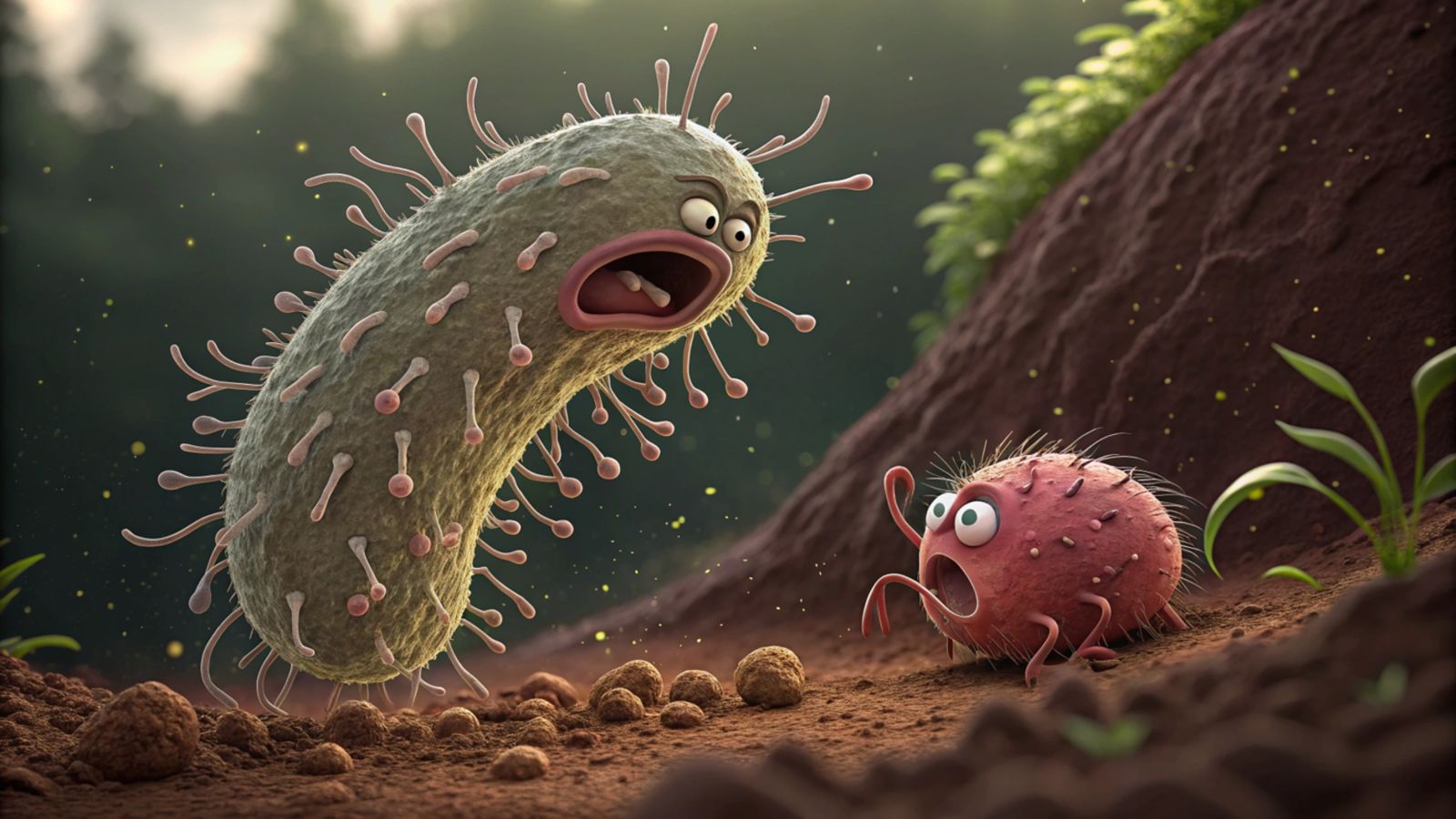Follow us on Google News (click on ☆)
In a study published in PNAS, scientists used an experimental evolution approach to identify key genetic determinants of their adaptation to environmental conditions. They isolated super-predators that activate a specific genetic program. This program optimizes prey consumption by stimulating fatty acid metabolism and enhancing resistance to oxidative stress.

These discoveries open new perspectives for understanding the nutritional constraints faced by predators in their ecological niche.
Bacterial predators are important for soil ecology
Soils host complex microbial communities. According to metagenomic data, predators play a central role in maintaining ecosystems. Yet this role remains poorly understood, and it is essential to analyze in more detail the interaction mechanisms between predators and their prey.
The soil bacterium Myxococcus xanthus is an ideal experimental model for studying these mechanisms at genetic and molecular levels. In the laboratory, scientists discovered that Myxococcus kills its prey through direct contact, causing them to burst and consuming their remains. However, the predator's metabolism and the nature of nutrients obtained from prey remained poorly understood.
Experimentally obtained super-predators
To clarify these questions, scientists conducted a laboratory evolution experiment to select super-predators better adapted to their interactions with prey. They isolated variants that accumulate mutations activating a specific genetic program enabling better adaptation to their prey. The results, published in PNAS, show this adaptation relies on two key abilities:
- Activation of fatty acid metabolism, allowing the predator to feed more efficiently, likely by better digesting lipids from prey carcasses.
- Activation of genes providing better resistance to oxidative stress. This adaptation reveals that when lysed, prey release reactive oxygen species that affect predatory bacteria.
Although conducted in the laboratory, this study reveals the stress endured by predators and their adaptation mechanisms. It opens new perspectives for understanding predatory bacteria nutrition and determining which lipids are consumed. A comparative analysis of strains isolated from soils would be particularly useful to better understand these adaptations in their natural environment.
Furthermore, this research draws parallels with pathogen-host interactions, where fatty acid metabolism and oxidative stress resistance also play key roles.

Microfluidics enables encapsulating Myxococcus (green) with a single prey (E. coli, red) in a microdroplet. Myxococcus xanthus is observed aggregating on the prey to kill it by contact. The droplets contain a dye sensitive to reactive oxygen species (ROS), which turns yellow when oxidized. Prey lysis causes yellow coloration, revealing ROS production. Myxococcus adaptation to ROS allows it to resist their attack, a phenomenon also observed when a pathogenic bacterium is phagocytized by a macrophage.
© Rikesh Jain, Tâm Mignot, Hung Le, CNRS